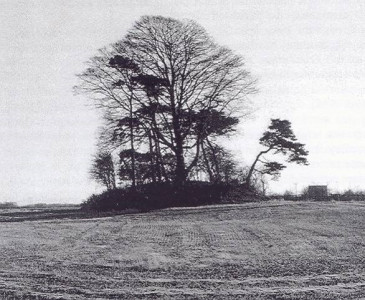Tombs in Beowulf
An archaeological reading of Beowulf
Howard M. R. Williams reports on his recent Grosvenor Lunchtime Lecture, organized by the Department of History and Archaeology of Chester University, “Tombs in ‘Beowulf’.”
I began my talk by discussing the many material dimensions to the poem Beowulf – halls, feasting and martial material culture, and burial mounds. I then introduced the challenge and problems of reading history and archaeology from the poem.
The poem does indeed shed light on an historical ‘reality,’ but only in the broadest of terms. It reveals the widespread deployment of dimensions of mortuary practices of the 5th-10th centuries in Britain and Scandinavia, including furnished graves, ship-burial, cremation practices and burial mounds. The poem’s fascination with imagined pasts is also revealed in the archaeological record, namely the widespread interest in inserting early medieval graves into prehistoric and Roman monuments before and alongside the widespread adoption of Christian burial traditions and mortuary geographies. Also significant is the way in which the poem reveals a perception of landscape that chimes with the emerging Anglo-Saxon kingdoms of the 7th century onwards. Rather than providing a direct window onto a legendary Migration Period, the poem reveals the rich power of material cultures and landscape in constructing social memories and worldviews for Christian secular elites in the later Anglo-Saxon period, in which the pagan past had a powerful role.

The 8th-century Anglo-Saxon crypt at Repton. This may well reflect the kind of environment the Beowulf-poet was trying to evoke as the dwelling of the dragon guarding treasure.
Turning to the funerals within Beowulf, we must guard ourselves from the seductive desire to equate the poem with the furnished ‘princely’ graves of the 7th century exclusively (including Taplow, Sutton Hoo Mounds 1, 2 and 17, and Prittlewell). A more fruitful approach is to examine the widespread evidence of varying uses of boats and ships in mortuary practices across northern Europe that provide the background to Scyld Scefing’s funeral at the beginning of the poem. Archaeology can not only shed light on the material world of tombs that created inspiration for the poet, but help us to understand the significance of tombs in the poem itself.
I have recently published an essay in a collected volume presenting a fresh perspective on the significance of the dragon’s mound in Beowulf. I argued that the archaeological certainty of a Neolithic megalithic monument being depicted in the epic poem is something of an allusion created by archaeologists and a desire to fix a categorical material classification to the monument in the poem. I therefore explored the idea that the monument was a ‘counter-tomb’ with its own biography within the poem itself. As such, it might have been regarded, more than a description of a prehistoric tomb, as a literary antithesis to the subterranean and semi-subterranean crypts containing the graves of kings and saints in middle Anglo-Saxon England. In both regards, my point was to try to query an equation between the poem and the archaeological record in terms of any single period, place or practice. The poem does not preserve traces of a pagan past; rather, it draws on the material world to convey a variety of temporalities and materialities.

The Asthall barrow, Oxfordshire: a 7th-century cremation with imported items covered by a prominent burial mound. In broad terms, such funerary practices mirror those afforded to the hero of ‘Beowulf’.
Sandwiched between my discussion in the lecture of Scyld Scefing’s boat-funeral and the dragon’s stone barrow, I also explored the tomb of Beowulf himself in the poem. After his death fighting the dragon, Beowulf is cremated on a headland, close to the dragon’s mound. His pyre is decked with the dragon’s treasure and the mound raised over the pyre subsequently serves as a waymarker for mariners.
I suggested that this funeral needs renewed attention. Scholars need to re-engage with the importance of cremation followed by mound-building – as described in the poem – as a widespread practice in Early Medieval Europe. Rather than trying to pin down a single source of inspiration for the poet, we can more profitably apply our transformed archaeological and anthropological understanding of cremation practices themselves worldwide, and in the early Middle Ages in particular, to the poem. In other words, in place of an attempt to find through archaeology the material ‘reality’ behind the poem, a combination of archaeology and a reading of the poem can demonstrate the varying and complex efficacies of cremation performances followed by mound-building in the construction of social memory and for myth making strategies among early medieval communities. Here lies the direction for future research…
Images in article are the authors. Header image credit: Hembo Pagi, West Kennet Long Barrow. Creative commons license.